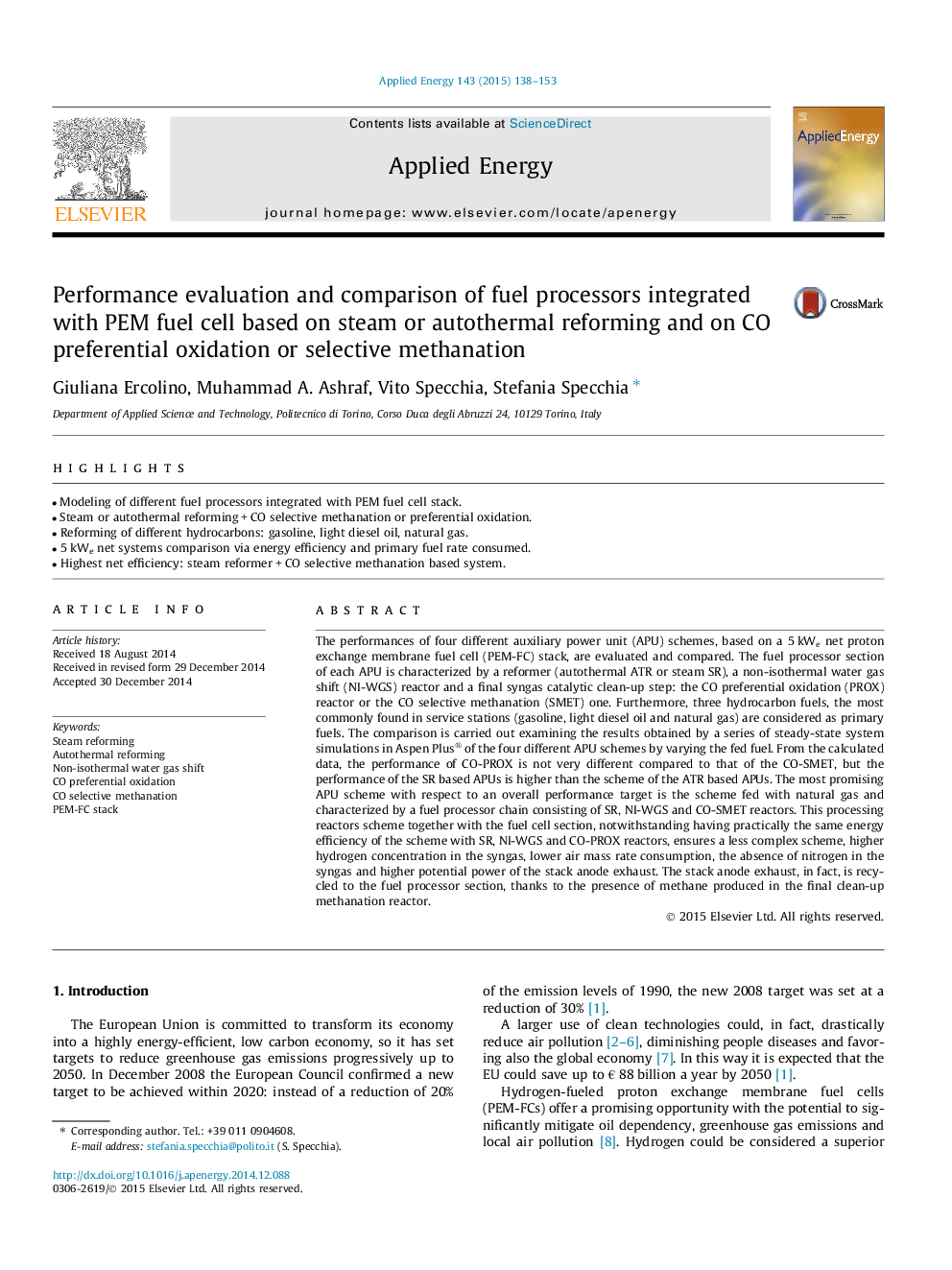| کد مقاله | کد نشریه | سال انتشار | مقاله انگلیسی | نسخه تمام متن |
|---|---|---|---|---|
| 6687665 | 501882 | 2015 | 16 صفحه PDF | دانلود رایگان |
عنوان انگلیسی مقاله ISI
Performance evaluation and comparison of fuel processors integrated with PEM fuel cell based on steam or autothermal reforming and on CO preferential oxidation or selective methanation
دانلود مقاله + سفارش ترجمه
دانلود مقاله ISI انگلیسی
رایگان برای ایرانیان
کلمات کلیدی
موضوعات مرتبط
مهندسی و علوم پایه
مهندسی انرژی
مهندسی انرژی و فناوری های برق
پیش نمایش صفحه اول مقاله

چکیده انگلیسی
The performances of four different auxiliary power unit (APU) schemes, based on a 5Â kWe net proton exchange membrane fuel cell (PEM-FC) stack, are evaluated and compared. The fuel processor section of each APU is characterized by a reformer (autothermal ATR or steam SR), a non-isothermal water gas shift (NI-WGS) reactor and a final syngas catalytic clean-up step: the CO preferential oxidation (PROX) reactor or the CO selective methanation (SMET) one. Furthermore, three hydrocarbon fuels, the most commonly found in service stations (gasoline, light diesel oil and natural gas) are considered as primary fuels. The comparison is carried out examining the results obtained by a series of steady-state system simulations in Aspen Plus® of the four different APU schemes by varying the fed fuel. From the calculated data, the performance of CO-PROX is not very different compared to that of the CO-SMET, but the performance of the SR based APUs is higher than the scheme of the ATR based APUs. The most promising APU scheme with respect to an overall performance target is the scheme fed with natural gas and characterized by a fuel processor chain consisting of SR, NI-WGS and CO-SMET reactors. This processing reactors scheme together with the fuel cell section, notwithstanding having practically the same energy efficiency of the scheme with SR, NI-WGS and CO-PROX reactors, ensures a less complex scheme, higher hydrogen concentration in the syngas, lower air mass rate consumption, the absence of nitrogen in the syngas and higher potential power of the stack anode exhaust. The stack anode exhaust, in fact, is recycled to the fuel processor section, thanks to the presence of methane produced in the final clean-up methanation reactor.
ناشر
Database: Elsevier - ScienceDirect (ساینس دایرکت)
Journal: Applied Energy - Volume 143, 1 April 2015, Pages 138-153
Journal: Applied Energy - Volume 143, 1 April 2015, Pages 138-153
نویسندگان
Giuliana Ercolino, Muhammad A. Ashraf, Vito Specchia, Stefania Specchia,